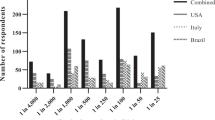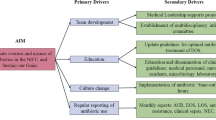Abstract
Objective
To determine potential net monetary benefit of an early onset sepsis calculator-based approach for management of neonates exposed to maternal intrapartum fever, compared to existing guidelines.
Study design
We performed a cost-benefit analysis comparing two management approaches for newborns >34 weeks gestational age exposed to maternal intrapartum fever. Probabilities of sepsis and meningitis, consequences of infection and antibiotic use, direct medical costs, and indirect costs for long-term disability and mortality were considered.
Results
A calculator-based approach resulted in a net monetary benefit of $3998 per infant with a 60% likelihood of net benefit in probabilistic sensitivity analysis. Our model predicted a 67% decrease in antibiotic use in the calculator arm. The absolute difference for all adverse clinical outcomes between approaches was ≤0.6%.
Conclusions
Compared to existing guidelines, a calculator-based approach for newborns exposed to maternal intrapartum fever yields a robust net monetary benefit, largely by preventing unnecessary antibiotic treatment.
This is a preview of subscription content, access via your institution
Access options
Subscribe to this journal
Receive 12 print issues and online access
$259.00 per year
only $21.58 per issue
Buy this article
- Purchase on Springer Link
- Instant access to full article PDF
Prices may be subject to local taxes which are calculated during checkout



Similar content being viewed by others
References
Schrag SJ, Gorwitz R, Fultz-Butts K, Schuchat A. Prevention of perinatal group B Streptococcal disease—revised guidelines from CDC. MMWR Recomm Rep. 2002;51(RR-11):1–24.
Galan Henriquez GM, Garcia-Munoz Rodrigo F. Chorioamnionitis and neonatal morbidity: current perspectives. Research and Reports in. Neonatology. 2017;7:41–52.
Verani JR, McGee L, Schrag SJ. Prevention of perinatal group B Streptococcal disease–revised guidelines from CDC, 2010. MMWR Recomm Rep. 2010;59(RR-10):1–31.
Polin RA. Committee on fetus and newborn. Management of neonates with suspected or proven early-onset bacterial sepsis. Pediatrics. 2012;129:1006–15.
Randis TM, Polin RA, Saade G. Chorioamnionitis: time for a new approach. Curr Opin Pediatr. 2017;29:159–64.
Cotten CM. Antibiotic stewardship: reassessment of guidelines for management of neonatal sepsis. Clin Perinatol. 2015;42:195–206.
Oliver EA, Reagan PB, Slaughter JL, Buhimschi CS, Buhimschi IA. Patterns of empiric antibiotic administration for presumed early-onset neonatal sepsis in neonatal intensive care units in the United States. Am J Perinatol. 2017;34:640–7.
Heine RP, Puopolo KM, Beigi R, Silverman NS, El-Sayed YY. ACOG committee opinion no. 712: intrapartum management of intraamniotic infection. Obstet Gynecol. 2017;130:e95–101.
Higgins RD, Saade G, Polin RA, Grobman WA, Buhimschi IA, Watterberg K, et al. Evaluation and management of women and newborns with a maternal diagnosis of chorioamnionitis: summary of a workshop. Obstet Gynecol. 2016;127:426–36.
Escobar GJ, Puopolo KM, Wi S, Turk BJ, Kuzniewicz MW, Walsh EM, et al. Stratification of risk of early-onset sepsis in newborns ≥34 weeks' gestation. Pediatrics. 2014;133:30–36.
Kuzniewicz MW, Puopolo KM, Fischer A, Walsh EM, Li S, Newman TB, et al. A quantitative, risk-based approach to the management of neonatal early-onset sepsis. JAMA Pediatr. 2017;171:365–71.
Puopolo KM, Draper D, Wi S, Newman TB, Zupancic J, Lieberman E, et al. Estimating the probability of neonatal early-onset infection on the basis of maternal risk factors. Pediatrics. 2011;128:e1155–1163.
Ding Y, Zangwill KM, Hay JW, Allred NJ, Yeh SH. Cost-benefit analysis of in-hospital influenza vaccination of postpartum women. Obstet Gynecol. 2012;119(2 Pt 1):306–14.
Grosse SD. The use of economic evaluation to inform newborn screening policy decisions: the Washington State experience. Milbank Q. 2016;4:366–91.
Jardine L, Davies MW, Faoagali J. Incubation time required for neonatal blood cultures to become positive. J Paediatr Child Health. 2006;42:797–802.
Aronson PL, Wang ME, Nigrovic LE, Shah SS, Desai S, Pruitt CM, et al. Time to pathogen detection for non-ill versus Ill-appearing infants ≤60 days old with bacteremia and meningitis. Hosp Pediatr. 2018;8:379–84.
Biondi EA, Mischler M, Jerardi KE, Statile AM, French J, Evans R, et al. Blood culture time to positivity in febrile infants with bacteremia. JAMA Pediatr. 2014;168:844–9.
Dierig A, Berger C, Agyeman PKA, Bernhard-Stirnemann S, Giannoni E, Stocker M, et al. Time-to-positivity of blood cultures in children with sepsis. Front Pediatr. 2018;6:222.
Ku LC, Boggess KA, Cohen-Wolkowiez M. Bacterial meningitis in infants. Clinics Perinatol. 2015;42:29–45, vii-viii.
Fuchs A, Zimmermann L, Bickle Graz M, Cherpillod J, Tolsa JF, Buclin T, et al. Gentamicin exposure and sensorineural hearing loss in preterm infants. PLoS ONE. 2016;11:e0158806.
Nestaas E, Bangstad HJ, Sandvik L, Wathne KO. Aminoglycoside extended interval dosing in neonates is safe and effective: a meta-analysis. Arch Dis Child Fetal Neonatal Ed. 2005;90:F294–300.
Kohli-Lynch M, Russell NJ, Seale AC, Dangor Z, Tann CJ, Baker CJ, et al. Neurodevelopmental impairment in children after group B Streptococcal disease worldwide: systematic review and meta-analyses. Clin Infect Dis. 2017;65(suppl_2):S190–S199.
Ouchenir L, Renaud C, Khan S, Bitnun A, Boisvert AA, McDonald J, et al. The Epidemiology, management, and outcomes of bacterial meningitis in infants. Pediatrics. 2017;140:e20170476.
Young PC, Korgenski K, Buchi KF. Early readmission of newborns in a large health care system. Pediatrics. 2013;131:e1538–1544.
Healthcare Cost and Utilization Project (HCUP), National Inpatient Sample (NIS) [Internet]. Agency for Healthcare Research and Quality (AHRQ). 2014. https://hcupnet.ahrq.gov/#setup.
Benitz WE, Gould JB, Druzin ML. Antimicrobial prevention of early-onset group B streptococcal sepsis: estimates of risk reduction based on a critical literature review. Pediatrics. 1999;103:e78.
de Louvois J, Halket S, Harvey D. Neonatal meningitis in England and Wales: sequelae at 5 years of age. Eur J Pediatr. 2005;164:730–4.
Kiser C, Nawab U, McKenna K, Aghai ZH. Role of guidelines on length of therapy in chorioamnionitis and neonatal sepsis. Pediatrics. 2014;133:992–8.
Shakib J, Buchi K, Smith E, Young PC. Management of newborns born to mothers with chorioamnionitis: is it time for a kinder, gentler approach. Acad Pediatr. 2015;15:340–4.
Stoll BJ, Hansen NI, Sanchez PJ, Faix RG, Poindexter BB, Van Meurs KP, et al. Early onset neonatal sepsis: the burden of group B Streptococcal and E. coli disease continues. Pediatrics. 2011;127:817–26.
Wortham JM, Hansen NI, Schrag SJ, Hale E, Van Meurs K, Sanchez PJ, et al. Chorioamnionitis and culture-confirmed, early-onset neonatal infections. Pediatrics. 2016;137:e20152323.
Benitz WE, Gould JB, Druzin ML. Risk factors for early-onset group B streptococcal sepsis: estimation of odds ratios by critical literature review. Pediatrics. 1999;103:e77.
Jackson GL, Rawiki P, Sendelbach D, Manning MD, Engle WD. Hospital course and short-term outcomes of term and late preterm neonates following exposure to prolonged rupture of membranes and/or chorioamnionitis. Pediatr Infect Dis J. 2012;31:89–90.
Centers for disease control and prevention. Births—methods of delivery. Online: Centers for Disease Control and Prevention. 2017. https://www.cdc.gov/nchs/fastats/delivery.htm. Accessed 25 Oct 2018.
Lee B, Newland JG, Jhaveri R. Reductions in neonatal listeriosis: "Collateral benefit" of group B streptococcal prophylaxis? J Infect. 2016;72:317–23.
Centers for Disease Control and Prevention. Economic costs associated with mental retardation, cerebral palsy, hearing loss, and vision impairment—United States, 2003. Morb Mortal Wkly Report. 2004;53:57–59.
Institute of Medicine (US) Committee on understanding premature birth and assuring healthy outcomes. Societal costs of preterm birth. Washington (DC) National Academies Press; 2007. https://www.ncbi.nlm.nih.gov/books/NBK11358/.
Kniesner TJ, Viscusi WK, Woock C, Ziliak JP. The value of a statistical life: evidence from panel data. Rev Econ Stat. 2012;94:74–87.
39. Neumann PJ, Sanders GD, Russell LB, Siegel JE, Ganiats TG. Cost-effectiveness in health and medicine. 2nd ed. New York: Oxford University Press; 2016.
Viscusi WK, Aldy JE. The value of a statistical life: a critical review of market estimates throughout the world. J Risk Uncertain. 2003;27:5–76.
US Environmental Protection Agency. Guidelines for preparing economic analyses: National Center for Environmental Economics; 2014. https://www.epa.gov/environmental-economics/guidelines-preparing-economic-analyses#whatare. Accessed 29 August 2017.
Cordero L, Ayers LW. Duration of empiric antibiotics for suspected early-onset sepsis in extremely low birth weight infants. Infect Control Hosp Epidemiol. 2003;24:662–6.
Jackson GL, Engle WD, Sendelbach DM, Vedro DA, Josey S, Vinson J, et al. Are complete blood cell counts useful in the evaluation of asymptomatic neonates exposed to suspected chorioamnionitis? Pediatrics. 2004;113:1173–80.
Martin JA, Hamilton BE, Osterman MJK, Driscoll AK, Mathews TJ. Births: final data for 2015. Natl Vital Stat Rep. 2017;66:1–70.
Carola D, Vasconcellos M, Sloane A, McElwee D, Edwards C, Greenspan J, et al. Utility of early-onset sepsis risk calculator for neonates born to mothers with chorioamnionitis. J Pediatr. 2018;195:48–52 e41.
Money N, Newman J, Demissie S, Roth P, Blau J. Anti-microbial stewardship: antibiotic use in well-appearing term neonates born to mothers with chorioamnionitis. J Perinatol : Off J Calif Perinat Assoc. 2017;37:1304–9.
Contopoulos-Ioannidis DG. Extended-interval aminoglycoside administration for children: a meta-analysis. Pediatrics. 2004;114:e111–e118.
Mukhopadhyay S, Lieberman ES, Puopolo KM, Riley LE, Johnson LC. Effect of early-onset sepsis evaluations on in-hospital breastfeeding practices among asymptomatic term neonates. Hosp Pediatr. 2015;5:203–10.
Tahirkheli NN, Cherry AS, Tackett AP, McCaffree MA, Gillaspy SR. Postpartum depression on the neonatal intensive care unit: current perspectives. Int J Women'S Health. 2014;6:975–87.
Cantey JB, Wozniak PS, Sanchez PJ. Prospective surveillance of antibiotic use in the neonatal intensive care unit: results from the SCOUT study. Pediatr Infect Dis J. 2015;34:267–72.
Spitzer AR, Kirkby S, Kornhauser M. Practice variation in suspected neonatal sepsis: a costly problem in neonatal intensive care. J Perinatol. 2005;25:265–9.
Tripathi N, Cotten CM, Smith PB. Antibiotic use and misuse in the neonatal intensive care unit. Clin Perinatol. 2012;39:61–68.
Ladha KS, Eikermann M. Codifying healthcare—big data and the issue of misclassification. BMC Anesthesiol. 2015;15:179.
Arora HS, Asmar BI, Salimnia H, Agarwal P, Chawla S, Abdel-Haq N. Enhanced identification of group B Streptococcus and Escherichia Coli in young infants with meningitis using the biofire filmarray meningitis/encephalitis panel. Pediatr Infect Dis J. 2017;36:685–7.
Stocker M, van Herk W, el Helou S, Dutta S, Fontana MS, Schuerman FABA, et al. Procalcitonin-guided decision making for duration of antibiotic therapy in neonates with suspected early-onset sepsis: a multicentre, randomised controlled trial (NeoPIns). Lancet. 2017;390:871–81.
Author information
Authors and Affiliations
Corresponding author
Ethics declarations
Conflict of interest
The authors declare that they have no conflict of interest.
Additional information
Publisher’s note: Springer Nature remains neutral with regard to jurisdictional claims in published maps and institutional affiliations.
Rights and permissions
About this article
Cite this article
Gong, C.L., Dasgupta-Tsinikas, S., Zangwill, K.M. et al. Early onset sepsis calculator-based management of newborns exposed to maternal intrapartum fever: a cost benefit analysis. J Perinatol 39, 571–580 (2019). https://doi.org/10.1038/s41372-019-0316-y
Received:
Revised:
Accepted:
Published:
Issue Date:
DOI: https://doi.org/10.1038/s41372-019-0316-y
This article is cited by
-
Clinical and economic impacts of a modified-observational screening approach to well-appearing infants born to mothers with chorioamnionitis
Journal of Perinatology (2023)
-
Efficacy of continuous monitoring of maternal temperature during labor using wireless axillary sensors
Journal of Clinical Monitoring and Computing (2022)
-
Early-onset sepsis risk calculator: a review of its effectiveness and comparative study with our evidence-based local guidelines
Italian Journal of Pediatrics (2021)
-
Early onset sepsis calculator implementation is associated with reduced healthcare utilization and financial costs in late preterm and term newborns
European Journal of Pediatrics (2020)
-
Multivariate risk and clinical signs evaluations for early-onset sepsis on late preterm and term newborns and their economic impact
European Journal of Pediatrics (2020)



